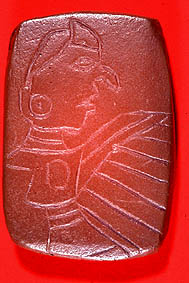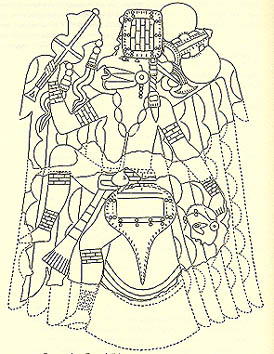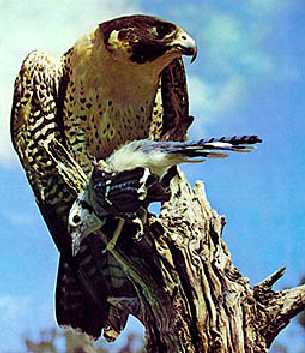
Sandstone birdman plaque, Cahokia site.
Some depictions may represent the quasi-mythical ancestors of a family, clan, or polity. Human effigy bowls and pots from Missouri and Arkansas in the shape of human heads are likely examples. In other contexts, depictions of the human form or body parts reflect people in the physical Mississippian world, that place between the upper and lower worlds of their structural universe (SCTY). Severed heads clutched by falcon-priest-chiefs are interpreted as examples of trophy heads of slain foes. The falcon-priest, such as that depicted on a sandstone tablet from Cahokia, is a rendering of a man wearing ritualistic garb. It is possible that this rendering depicts the priest-chief conducting a ritual of some political and/or military importance.
Thus, it seems that Missisippian art reflects not only the division of the upper and lower worlds, but their social world as well. Mississippian art embodies both their real world and their world view of the natural and supernatural.

